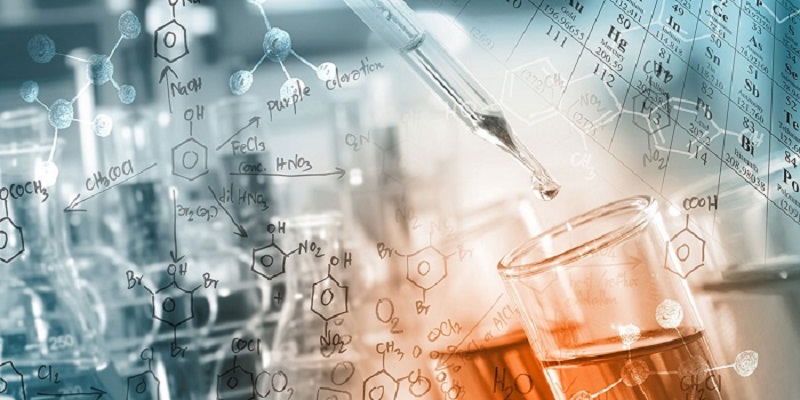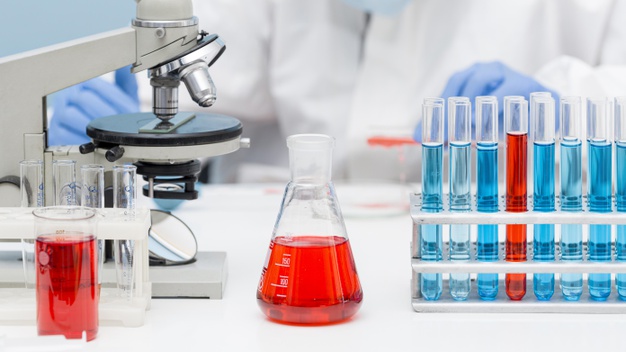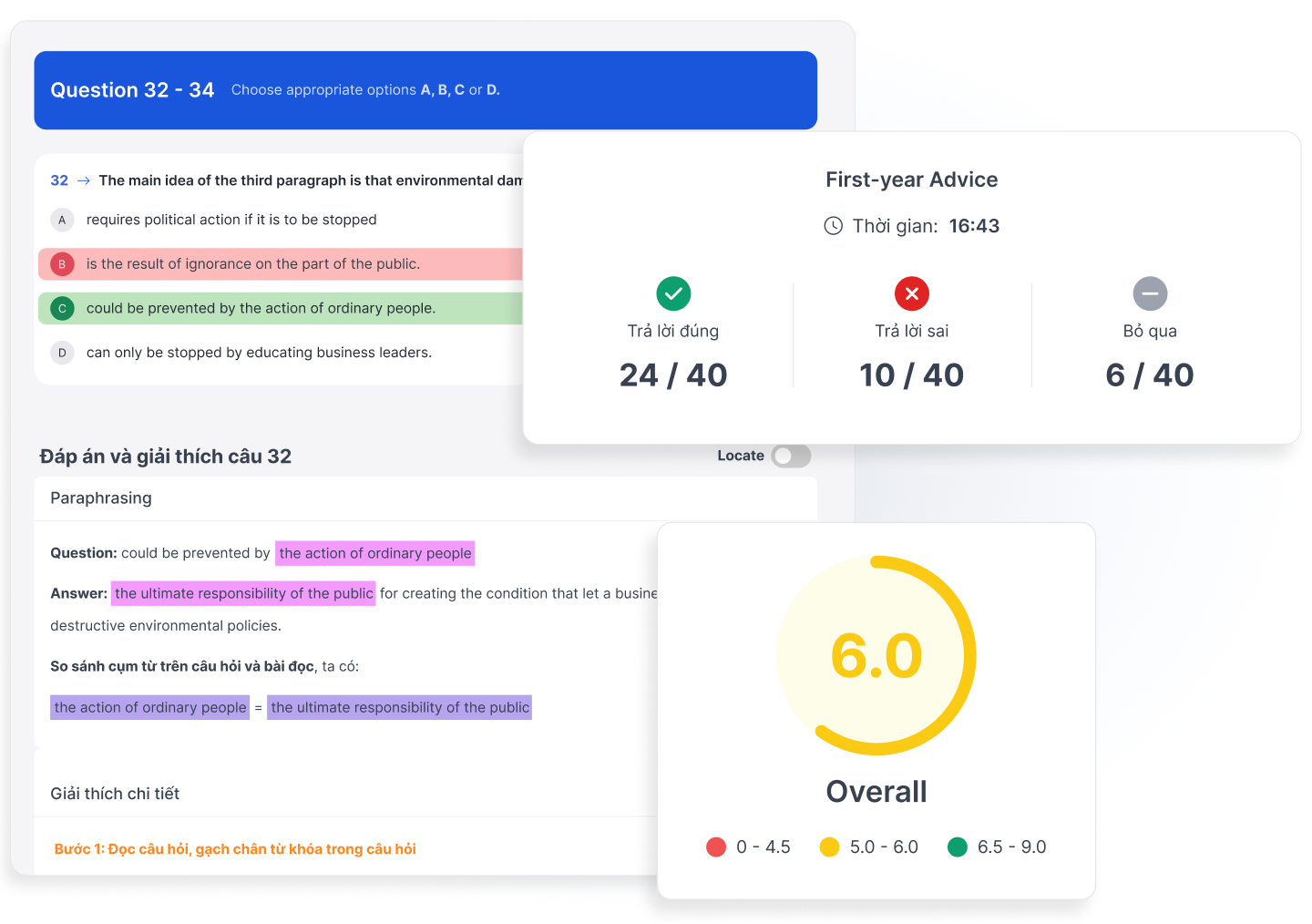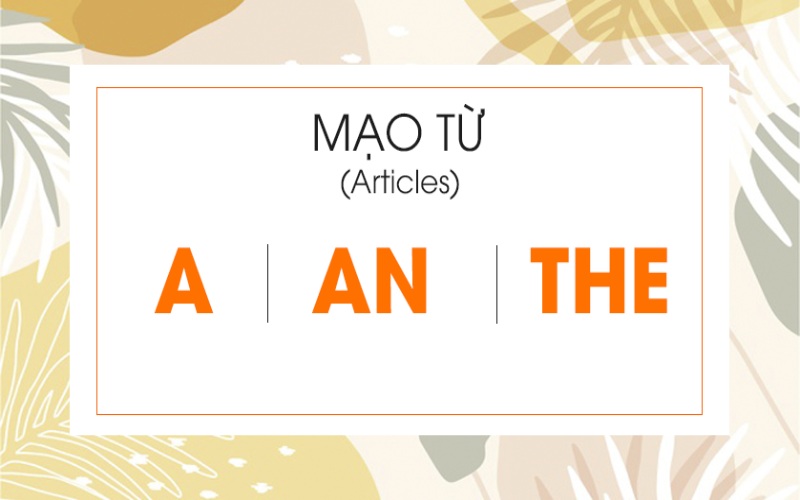Ngành hóa học đang ngày càng chứng minh được tầm quan trọng của mình. Vì thế ngày càng nhiều các chuyên gia hóa học được tạo cơ hội làm việc ở các tập đoàn nước ngoài hoặc trực tiếp ra nước ngoài làm việc. Và để nắm bắt được những cơ hội đó thì bạn phải chuẩn bị cho mình một bộ từ điển tiếng Anh chuyên ngành hóa học. Bài viết sau đây UNI Academy sẽ chia sẻ đến bạn tiếng Anh chuyên ngành hóa học.
Ngoài ta bạn cũng có thể xem thêm:
Nội dung chính
1. Từ vựng chuyên ngành hóa học
A – B – C
- Acupuncture needle: Kim châm cứu
- Alcohol burner: Đèn cồn
- Aliphatic compound: hợp chất béo
- Alkali metals or alkaline: kim loại kiềm
- Aluminium foil: Giấy bạc
- Aluminum alloy: hợp kim nhôm
- Analytical balance: Cân phân tích
- Analytical chemistry: hoá học phân tích
- Analyze: hoá nghiệm
- Applied chemistry: hoá học ứng dụng
- Atom: nguyên tử
- Atom: nguyên tử
- Atomic density weight: nguyên tử lượng
- Atomic energy: năng lượng nguyên tử
- Atomic energy: năng lượng nguyên tử
- Balance: cân bằng
- Beaker: Cốc đong
- Biochemical: hoá sinh
- Bivalent or divalence: hoá trị hai
- Break up: phân huỷ
- Buck reflex hammer: Búa gõ thử phản xạ
- Bunchner flask: Bình lọc hút chân không
- Bunchner funnel: Phễu lọc hút chân không
- Bunsen burner: Đèn bunsen
- By nature: bản chất
- Caloricfic radiations: bức xạ phát nhiệt
- Cellulose- dialysis tubing celllose membrane: Màng lọc thẩm thấu
- Clamp: Dụng cụ kẹp
- Compose: cấu tạo
- Compound: hợp chất
- Concentration: nồng độ
- Condensation heat: nhiệt đông đặc
- Condenser: Ống sinh hàn
- Cotton wool: Bông gòn
- Crucible: Chén nung
- Crystal or crystalline: tinh thể
- Chain reaction: phản ứng chuyền
- Chemical action: tác dụng hoá học
- Chemical analysis: hoá phân
- Chemical attraction: ái lực hoá học
- Chemical energy: năng lượng hoá vật
- Chemical fertilizer: phân hoá học
- Chemical products: hoá phân tích
- Chemical properties: tính chất hoá học
- Chemical substance: hoá chất
- Chemical: hoá chất
- Chemist: nhà hoá học
- Chemistry: hoá học
- Chemosynthesis: hoá tổng hợp
- Chemotherapy: hoá liệu pháp
- Chromatography column: Cột sắc ký
D – E – F
- Desccicator: Bình hút ẩm
- Desciccator bead: Hạt hút ẩm
- Dispensing bottle: Bình tia
- Distil: chưng cất
- Dropper: Ống nhỏ giọt
- Effect: tác dụng
- Electrolysis: điện phân
- Electrolytic dissociation: điện ly
- Element: nguyên tố
- Elementary particle: hạt cơ bản
- Erlenmeyer Flask: Bình tam giác
- Etreme / extremun: cực trị
- Evaporating flask: Bình cầu cô quay chân không
- Exothermal/ exothermic: phát nhiệt
- Face mask: Khẩu trang
- Falcon tube: Ống ly tâm
- Filter paper: Giấy lọc
- Flat bottom florence flask: Bình cầu cao cổ đáy bằng
- Flourescent microscope: Kính hiển vi huỳnh quang
- Funnel: Phễu
- Fusion power: năng lượng nhiệt hạch
G – H – I – L
- Glass bead: Hạt thủy tinh
- Glass rod: Đũa thủy tinh
- Glass spreader: Que trải thủy tinh
- Goggle: Kính bảo hộ
- Humidity indicator paper: Giấy đo độ ẩm
- Hydrolysis: thuỷ phân
- Interact: tác dụng lẫn nhau
- Lab coat: Áo blouse
- Laboratory bottle: Chai trung tính
- Liquid: chất lỏng
- Liquify: hoá lỏng

M – N – O – P
- Measuing cylinder: Ống đong
- Measuring cylinder: Ống đong
- Medical glove: Găng tay y tế
- Microscope slide: Lam kính
- Microscope: Kính hiển vi
- Microtiter plate: Tấm vi chuẩn
- Mineral substance: chất vô cơ
- Mortar and pestle: Chày và cối
- Nitrogen and protein determination system: Máy chưng cất đạm
- Nonferrous metals: kim loại màu
- Organic substance: chất hữu cơ
- Overhead stirrer: Máy khuấy đũa
- Pecipitating agent: chất gây kết tủa
- Petri dish: Đĩa petri
- Petrifilm plate: Đĩa petrifilm
- PH meter: Máy đo pH
- Pipette Tip: Đầu tip
- Polarize: phân cực
- Polarizer: chất phân cực
- Precious metals: kim loại quý
- precision balance: Cân kỹ thuật
- Prepare: điều chế
- pressure gauge: Đồng hồ đo áp suất
- Pressure: áp suất
- Pressure: áp suất
- Propellant: chất nổ đẩy
- Pyrochemistry: hoá học cao nhiệt
- Physical chemistry: hoá học vật lý
Q – R – S
- Quantic: nguyên lượng
- Radiating energy: năng lượng bức xạ
- Reactant: chất phản ứng
- Reaction / react / respond react: phản ứng
- Reactor: lò phản ứng
- Recirculating chiller: Bộ làm mát tuần hoàn
- Research: nghiên cứu
- Ring clamp: Vòng đỡ
- Round bottom flask: Bình cầu cao cổ đáy tròn
- Rubber button: Nút cao su
- Sampling bottle: Bình đựng mẫu
- Sampling tube: Ống lấy mẫu
- Scissor: Kéo
- Scoop: Muỗng
- Scrubber: Bộ hút và trung hòa khí độc
- Secondary effect: tác dụng phụ
- Seive: Sàn rây
- Semiconductor: chất bán dẫn
- Side effect: phản ứng phụ
- Solidify: đông đặc
- Stirrer shaft: Trục khuấy
- Stirring bar: Cá từ
- Straight: nguyên chất
- Sulphite indicator paper: Giấy thử sulphite
- Syrine filter: Đầu lọc syrine
T – U – V – W
- Test [chemically]: hoá nghiệm
- Test tube cleaning brush: Chổi ống nghiệm
- Test tube holder: Kẹp ống nghiệm
- Test tube rack: Gía đỡ ống nghiệm
- Test tube: Ống nghiệm
- Touch: tiếp xúc
- Tweezer, forcep: Kẹp nhíp
- Two neck round botton flask: Bình cầu hai cổ đáy tròn
- Thermometer: Đồng hồ đo nhiệt độ
- Three neck round bottom flask: Bình cầu ba cổ đáy tròn
- Ultrapure water system: Máy lọc nước siêu sạch
- UV lamp: Đèn UV
- Vacuum oven: Lò nung chân không
- Vacuum pump: Bơm chân không
- Volume: thể tích
- Volumetric Flask: Bình định mức
- Water distiller: Máy cất nước
- Weighing paper: Giấy cân
- Wire gauze: Miếng amiang
2. Thuật ngữ tiếng Anh chuyên ngành hóa học

1. Inorganic chemistry – Hóa vô cơ
(The study of chemical reactions and properties of all the elements and their compounds , with the exception of hydrocarbons, and usually including carbides, oxides of carbon, metallic carbonates, carbon-sulfur compounds, and carbon-nitrogen compounds)
2. Organic chemistry – Hóa hữu cơ
(the study of the composition, reactions and properties of carbon-chain or carbon-ring compounds or mixtures thereof)
3. Analitycal chemistry – Hóa phân tích
(The branch of chemistry dealing with techniques which yield any type of information about chemical systems)
4. Stereochemistry – Hóa lập thể
(The study of the spatial arrangement of atoms in molecules and the chemical and physical consequences of such arrangement)
5. Physical chemistry – Hóa lý
(The branch of chemistry that deals with the interpretation of chemical phenomena and properties in terms of the underlying physical processes, and with the development of techniques for their investigation)
6. Quantum chemistry – Hóa lượng tử
(A branch of physical chemistry concerned with the explanation of chemical phenomena by means of the law of quantum mechanics)
7. Colloid chemistry – Hóa keo
(The scientific study of matter whose size is approximately 10 to 10000 angstroms (1 to 1000 nanometers), and which exists as a suspension in a continuous medium, especially a liquid, solid, or gaseous substance)
8. Biochemistry – Hóa sinh
(The study of chemical substance occurring in living organisms and the reactions and methods for identifying these subsatances)
9. Radiochemistry – Hóa phóng xạ
(That area of chemistry concerned with the study of radioactive substances)
10. Food chemistry – Hóa thực phẩm
(The study of chemical processes and interactions of all biological and non-biological components of foods)
11. Substance – chất
(a type of solid, liquid or gas that has particular qualities)
12. Compound – thành phần/ hỗn hợp
( a subtance formed by a chemical reaction of two or more element im fixed amount relative.
13. Reaction – phản ứng
(a chemical change produced by two or more substances acting on each other)
14. addition reaction – Phản ứng cộng
(a reaction in which radicals are added to both sides of a double or triple bond)
15. elimination reaction – Phản ứng thế
(Any reaction in which a small molecule is removed from that of the reactants)
16. ionic bonds – Liên kết ion
(- Ionic bonds are atomic bonds created by the attraction of two differently charged ions.
– Example of ionic bonds include: NaCl (Sodium Chloride))
17. covalent bond – Liên kết cộng hóa trị
(A chemical bond formed by the sharing of one or more electrons, specially pairs of electrons, between atoms.)
18. Formula – Công thức
(letters and symbols that show the parts of a chemical compound)
19. Isomer – Đồng phân
(any of two or more chemical compounds having the same constituent elements in the same proportion by weight but differing in physical or chemical properties because of differences in the structure of their molecules)
20. Chiral – bất đối / thủ tính
(designating or of an asymmetrical form, as a molecule, that cannot be superimposed on its mirror image)
21. Element – Nguyên tố
(gold, oxygen, carbon,…are all elements)
22. Atom – Nguyên tử
(the smallest part of a chemical element that can take part in a chemical reaction)
23. Molecule – Phân tử
(A molecule of water consists of two atoms of hydrogen and one atom of oxygen)
24. Bond – Liên kết
(the way in which atom are held together in a chemical compound)
25. periodic table – Bảng hệ thống tuần hoàn
(a list of all the chemical elements, arranged according to their atomic number)
26. Metal – Kim loại
( iron, gold, copper,….are all metals)
27. Nonmetal – Phi kim
( carbon, oxygen, nitrogen,….are all nonmetals)
28. mass number – Số khối (A=Z+N)
(the total number of protons and neutrons in an atom)
29. atomic number – Số hiệu nguyên tử (Z=P=E)
(the number of protons in the nucleus of an atom)
30. noble gas – Khí trơ (khí hiếm)
(any of group of gases that do not react with other chemicals. Argon, helium, neon and krypton are noble gases)
Hy vọng bài viết này sẽ đem đến cho bạn một lượng từ vựng chuyên ngành hóa học lớn giúp bạn cải thiện khả năng học hóa bằng Tiếng Anh. Chúc bạn may mắn trên con đường học tập!








